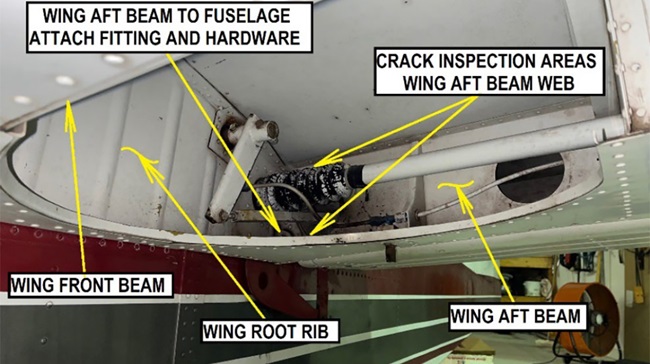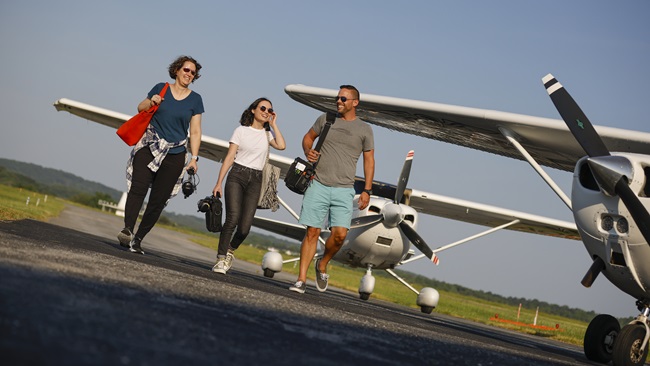A few of my friends accuse me of being a glutton for punishment, a public masochist. They cite my occasional writing about the myth of downwind turns as but one example. In a sense, they are right. Every time I write about the subject, I am deluged with an onslaught of mail. Fortunately, most agree with the position that there is no inherent difference between a downwind turn performed in a homogenous wind and an upwind turn made under the same conditions.
It seems that I am about to prove my friends correct, because I am about to use my literary lance to assault another sacred cow: flying on the step.
For the benefit of those who have never heard of this technique, it is a method of establishing cruise flight that presumably results in a slightly greater airspeed than when establishing cruise in a conventional manner. The theory goes something like this: During climb, the pilot ascends a few hundred feet above the desired cruise altitude. He then enters a very shallow dive to return to it. This causes the aircraft to achieve an airspeed which, according to the proponents, ultimately results in a slightly greater and sustainable cruise airspeed than would otherwise be possible. This is what is referred to as flying on the step.
The theory of step flying probably originated with speedboats and seaplanes operating on water. Such vehicles do have step modes during which greater speeds are sustainable at lower power settings than when operating in the plowing mode (nose high in the water). Although maneuvering on the step does apply to water-based vehicles, there is absolutely no basis for believing that the same principle is applicable in flight. If such a thing were possible, I can assure you that every airline would encourage its captains to request permission from air traffic control to enter cruise flight from above instead of below. The fuel savings over a period of years would be astronomical.
Curiously, there have been some notable aerodynamicists and engineers who advocate the theory of flying on the step. They use all manner of fancy terms (such as drag buckets that can be found in some performance curves) to validate their theory. The problem is that no matter how convincing their arguments might be on paper, they cannot be validated in flight.
Several years ago, a pilot who steadfastly maintained that he could prove the efficacy of step flying volunteered to demonstrate the phenomenon to me in his Beech Bonanza. This I had to see. I also conceded that perhaps I did not know how to place an airplane properly on the step. I eagerly accepted his offer.
Our target altitude was 6,500 feet msl in smooth air over Los Angeles. We passed through this altitude, and at 6,900 feet the pilot slowly pushed the nose down and entered a shallow dive. Moments later the airplane was stabilized in cruise flight at an indicated airspeed of 159 knots.
The first phase of the test concluded, we descended a few thousand feet and began the second and comparative phase. As we approached 6,500 feet during the climb, the pilot leveled off in a conventional manner. When the aircraft finally stabilized in cruise flight, the resultant speed was only 155 knots, fully 4 knots less than when "flying on the step." The pilot folded his arms across his chest and directed a smug expression of victory in my direction.
Was the point proven? One would think so, but it was not — because this pilot, like many others, did not know how to transition properly from climb to cruise. This may sound like a ridiculous assertion, but it is founded in fact.
I cannot explain the reason, but many pilots (especially inexperienced ones) tend to reduce power prematurely after leveling off at cruise altitude. Perhaps they are impatient, or perhaps they subconsciously believe that there is a risk that the airplane might go too fast. In any event, the throttle (and propeller-pitch control, when applicable) often is retarded before the airplane has had an opportunity to accelerate to its normal cruise speed. In a sense, the airplane is forced to cruise in a subtle form of mushing flight.
Having noted that this pilot had prematurely reduced from climb to cruise power, I asked him if he would allow me to fly his airplane for a few moments. After descending to about 4,500 feet, I placed the airplane in a normal climb and soon leveled off at the same target altitude. But rather than retard the throttle, I patiently allowed the airplane to accelerate under the inspiration of climb power until it would accelerate no more. I retarded the power controls to the same cruise setting as that which had been used earlier. The airplane slowed gradually, and when the airspeed had finally stabilized, guess what? The indicated airspeed was identical to the speed that had been achieved by diving the airplane "onto the step."
I confess that much of the academic "proof" advanced by on- the-step proponents is too complex for me to understand. (I suspect that such complexity is sometimes designed to overwhelm and quiet the opposition.) However, if placing an airplane on the step does not result in a noticeable and sustainable increase in airspeed, then — as far as I am concerned — the theory is invalid.



